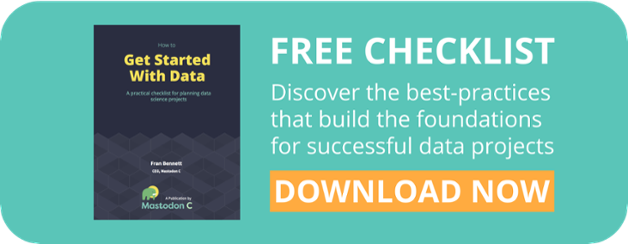Local government and cities have a challenging job - delivering multiple complex services, which have a large influence on their citizens’ daily lives, and doing that in an environment of extreme financial pressures. According to research by the Local Government Information Unit with The Municipal Journal, 65% of authorities expect to have to use their reserves this year. Local government leaders are increasingly turning to technology and data-driven approaches to help make the difficult decisions necessary, to plan and deliver services optimally under these constraints, and to co-ordinate complex services around what citizens expect and need.
Better use of data is a big piece of this: it can help leaders save money and improve performance by creating better policies and making better decisions, by accessing shared, trusted data and exploring policy options.
We already know that many executives in commercial organisations are taking advantage of big data, data science, and new data modelling techniques in order to compete. Now, city and local government leaders are starting to do the same, in order to achieve their own arguably more important goals.
Here are four practical approaches that can help local government and city leaders be more data-driven.
-
Use data tools to anticipate actual service demands, and plan for opportunities. Big processes like the JSNA (Joint Strategic Needs Assessment - the plan for health and care needs of local populations), are already a key opportunity to work out expected demand and to plan services against this; new data modelling techniques and tools now turn months-long planning processes into fast and flexible discussions, opening up the opportunity to make more nuanced decisions as situations evolve and to turn planning and projection from an annual event into an ongoing support tool
-
Overcome a lack of data capacity in internal intelligence or analytics teams by using modern data platforms and tools to take the load off. While it’s critical for your internal staff to be smart and engaged consumers of data and modelling, you can make use of modern tools to make their work faster and to automate the repetitive parts, like collecting and sharing standard data points, labelling data, or finding common keywords in text.
-
Use data and data science techniques to explore whether policies will be effective through better modeling and analysis. Once you have a baseline of what demand you expect naturally, data tools can help you ‘play out’ the implications of different options. Modern tools, allow you to run different scenarios - allowing you to understand the impact of remodelling services, redirecting demand at a certain point in the process, or other choices that your political leadership may be considering. When you move beyond Excel for your modeling, it also becomes much easier to make use of more sophisticated statistical ideas like confidence intervals, to help your leadership get a wider context on the situation.
-
Improve how data is shared internally and externally. Using a tool to ensure that data can be worked on collaboratively, with the latest versions shared privately with the people and organisations who can make best use of it. You can also release less sensitive data openly to get communities and partners engaged. Releasing data openly also breaks down silos and helps get departments to think about what problems they want to solve with data.
Share this article

